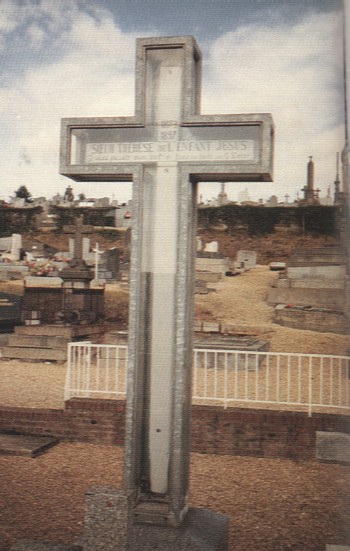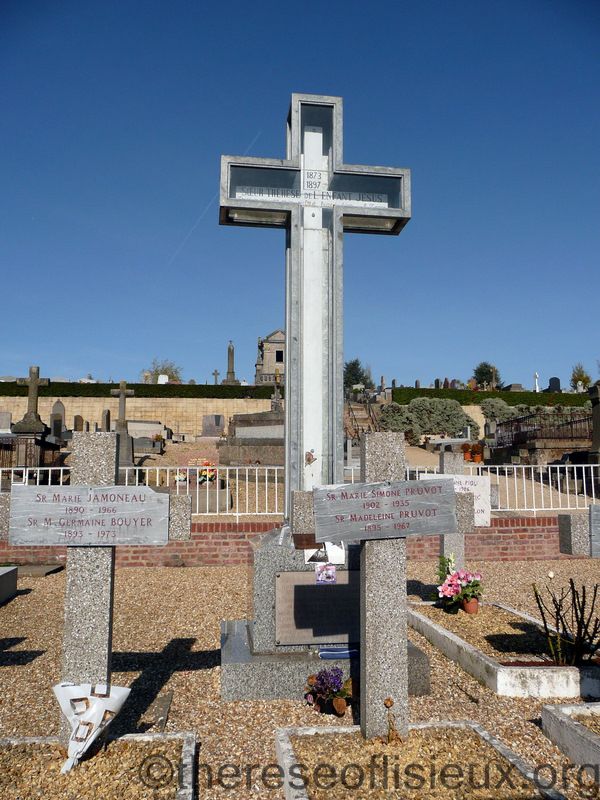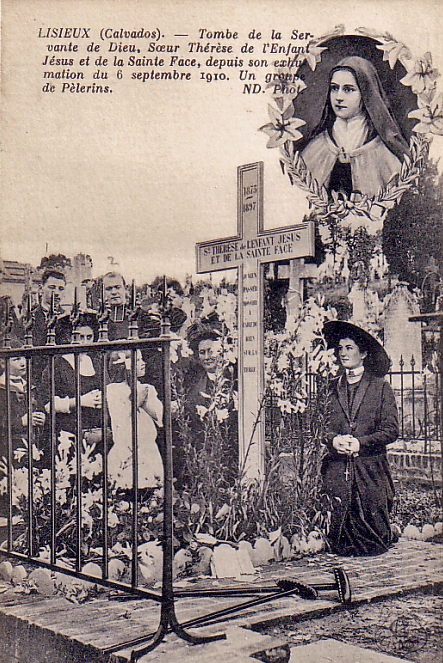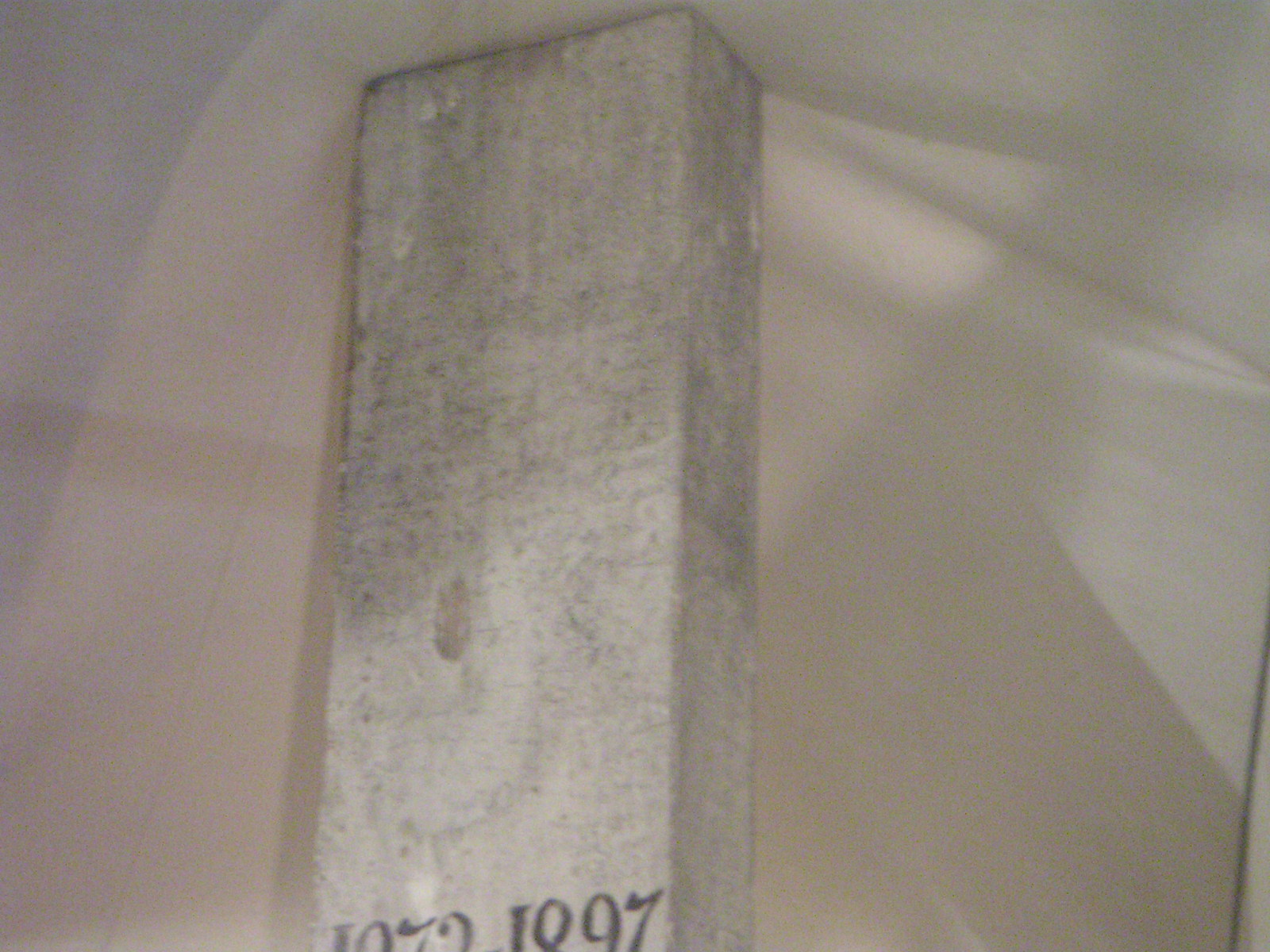St. Therese of Lisieux - the hundredth anniversary of the first exhumation of her body on September 6, 1910
/Today is the centenary of the first exhumation of the relics of St. Therese of Lisieux. On September 6, 1910 the body of Sister Therese of the Child Jesus was exhumed from her grave in the Carmelite plot at the municipal cemetery at Lisieux for the first time. Therese had been buried here on the morning of October 4, 1897 after a funeral Mass at Lisieux Carmel. A small funeral procession followed her body to the cemetery that day. Her sister Leonie led them, since her uncle, Isidore Guerin, was ill. Isidore had recently bought this plot in the town cemetery for the use of the Carmelite nuns, and his niece Therese was the first to be buried there.
It was to this grave that the first pilgrims came, many to give thanks for favors and cures received from God through the intercession of Sister Therese. Some miracles took place at the tomb. On May 25, 1908, the mother of little Reine Fauquet, a four-year-old girl from Lisieux who was blind, brought her child to Therese's tomb. The next day the child's vision was suddenly restored. Dr. La Neele, Therese's cousin by marriage, who did not favor the introduction of her cause, nevertheless had to sign a certificate attesting to the cure. (See Therese and Lisieux by Pierre Descouvement and Helmut-Nils Loose. Toronto, Ontario: Novalis, 1996, p. 316).
Bishop Lemonnier of Bayeux prays with the Archbishop of Paris at Therese's grave.
Though Therese had died less than thirteen years before, the process to inquire into her sanctity was already underway. The tribunal convened by the bishop of the diocese of Bayeux had begun in August 1910 to interview witnesses at Lisieux.
The custom of exhuming the body of a person who might be declared a saint was rooted in the time when the Church considered, among other criteria, whether the body of the candidate had been preserved. Because the Church has found that incorruptibility may be caused by environmental conditions, exhumation is no longer necessary.For more about this question, thanks to the Internet Archive, see the article by Dwight Longenecker.
The night before Therese's exhumation, she appeared to Mother Carmela of the Heart of Jesus, the prioress of the Carmel of Gallipoli in Italy. Mother Carmela was not aware that the body of Therese was to be exhumed in France the next day. She reported that Therese's "countenance was very beautiful and shining, her garments glittered with a light as of transparent silver." Therese said to her "Only my bones will be found." (See Storm of Glory: The Story of St. Therese of Lisieux, by John Beevers. New York: Doubleday, 1955, p. 128). [For an account of the miracles God worked through Therese in 1910 and 1911 to rescue the Carmel of Gallipoli from near bankruptcy, please see "The Miracle of Gallipoli" by Giovanni Ricciardi. This miracle confirmed her little way and was given a special session in the diocesan process].
The exhumation of Sister Therese's body took place in the presence of Bishop Lemonnier, the bishop of Bayeux, and of about a hundred other people. Dr. de Corniere and Dr. La Neele, who looked after Therese in her illness, were present and confirmed that her body had disintegrated in the usual way soon after her death. Therese had said "You will not find me anything but a little skeleton." Her sister Pauline recorded that on August 20, 1897, Therese had said to her, "with a happy and mischievious air: 'I shall soon be in the horrors of the tomb! And you will be there also, little Mother! And when I see you arrive next to me, my humbled bones will leap with gladness!' (See St. Therese of Lisieux: Her Last Conversations. Washington, D.C.: ICS Publications, 1977, p. 156).
The first exhumation of the body of the Servant of God, Sister Therese of the Child Jesus of the Holy Face, at the Lisieux cemetery on September 6, 1910
Only the bones covered with bits of cloth remained. But the palm branch that had been placed inside when she was buried was still fresh and green, as it is today. Was this God's way of confirming that God had granted Therese's desire to win "the palm of martyrdom"? "that thus I may become a martyr of Your love, O my God!"
Souvenirs of the first exhumation: the palm branch; bits of the coffin
Pauline wrote that on July 3, 1897 she said to Therese: "When you are dead, they will place a palm in your hand." Therese answered, "Yes, but I'll have to let it go whenever I want to, in order to give graces by the handful to my little Mother. I will have to do everything that will be pleasing to me." (See Last Conversations, p. 72).
The gravediggers noticed the scent of violets that came from the rotting boards of the decaying casket. (Therese and Lisieux, p. 310). Dwight Longenecker mentions the remarks of one of the witnesses to the exhumation about this scent.
Today the same cross, now enclosed in stone and glass, that marked Therese's first grave from 1897 through 1910 marks the site where that first grave was. The statue nearby marks the site of her second grave.Part of the Carmelite plot in the town cemetery. The cross marks the site of Therese's first grave (1897-1910); the statue marks her second grave (1910-1923).
The cross has the words "I want to spend my heaven in doing good on earth."
After this first exhumation, Therese's body was reburied in a cemented vault in a different burial plot near the center of the Carmelite plot.
The second grave of Sister Therese of the Child Jesus of the Holy Face (1910-1923).
As Therese's fame spread, growing numbers of pilgrims came to visit this second grave.
Pilgrims pray at the second grave of St. Therese. Many who had been cured through the intercession of Therese left their crutches and canes there in thanksgiving.
The cross that marked this second grave is on display today at the "parcours Theresien," a beautiful display of objects associated with Therese at the Lisieux Carmel.
A notice from the "parcours Theresien," an exhibit pilgrims may visit at the Lisieux Carmel
On exhibit in the "parcours Theresien" at Lisieux Carmel, the cross that marked Therese's second grave (1910-1923)
Pilgrims scribbled their petitions and thanksgivings all over the cross.
Today a statue marks the site of Therese's second grave, where her body remained until it was returned to Carmel on March 26, 1923, a month before she was beatified.
Statue marking the spot in Lisieux cemetery where Therese was buried, 1910-1923
At the base of the statue are written (in French) Therese's words "My God, You have surpassed my expectations, and I want to sing of Your mercies."
Several other Carmelites are also buried in the plot where Therese's second grave was, including her prioress, Mother Marie de Gonzague; her novice mistress, Sister Marie of the Angels; and Mother Marie-Ange of the Child Jesus, who entered Lisieux Carmel after Therese's death. Profoundly convinced of Therese's sanctity, she petitioned Bishop Lemonnier on the very day of her election as prioress in 1908 to open the cause of Therese, and he granted her petition.
Plate bearing the names of three nuns buried in the same plot: Mother Marie de Gonzague, Therese's prioress; Sister Marie of the Angels, Therese's novice mistress; and Mother Marie-Ange of the Child Jesus, a prioress who entered after Therese's death
Three of Therese's novices, Sister Martha of Jesus, Sister Marie-Madeleine of the Blessed Sacrament, and Sister Marie of the Trinity, are also buried here.
Mme. Tifenne, a friend of the Martin family from Alencon and the godmother of Therese's sister Leonie, maintained that this statue resembled Therese more than any other. (See Collected Little Flower Works by Rev. Albert Dolan. Chicago: Carmelite Press, 1929, p. 160.
Statue marking the site of Therese's second grave in the plot her uncle bought in the town cemetery for the Carmelites
As we pass through the years leading up to the centenary of Therese's canonization, we will celebrate the centenary of many important events, including the close of the diocesan process, the opening of the cause at Rome, the Apostolic Process, the second exhumation, the declaration of Pope Benedict XV that Therese practiced heroic virtue (on which occasion he delivered a long proclamation recommending her way of confidence and love to the whole Church), the solemn translation of Therese's relics to the Carmel, her beatification, and her canonization. May they be occasions of grace for the whole world.
For permission to use photos I thank the late Fr. J. Linus Ryan and photographers Peter and Liane Klostermann, Juan Marrero, and Jesus Moreno Pacheco.
















